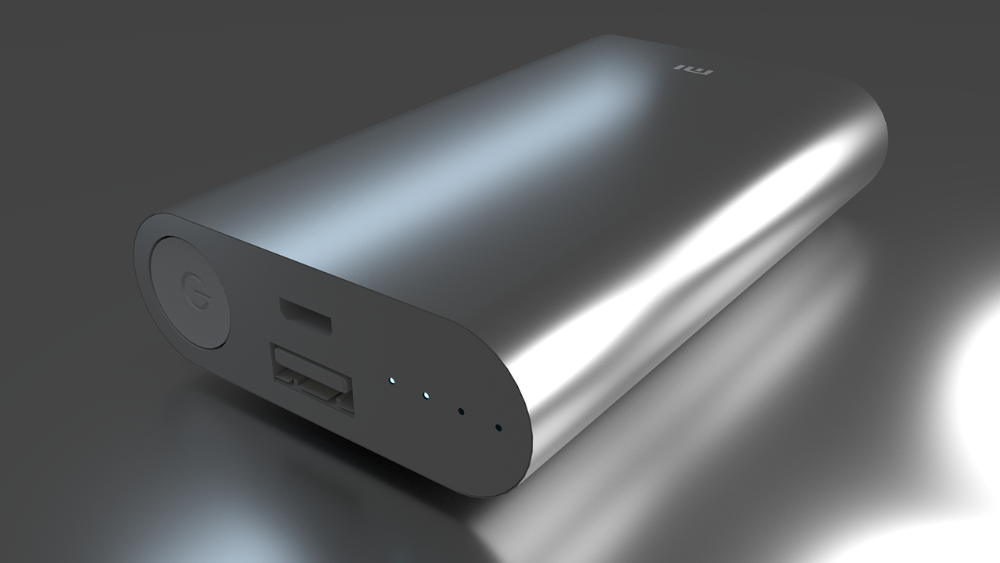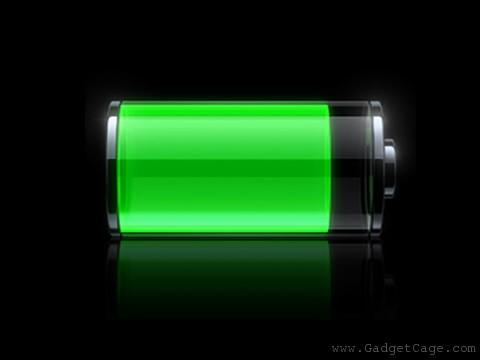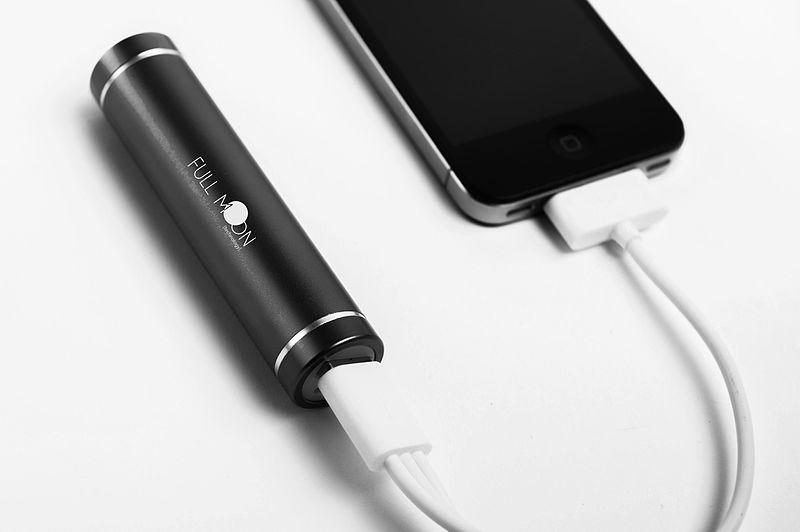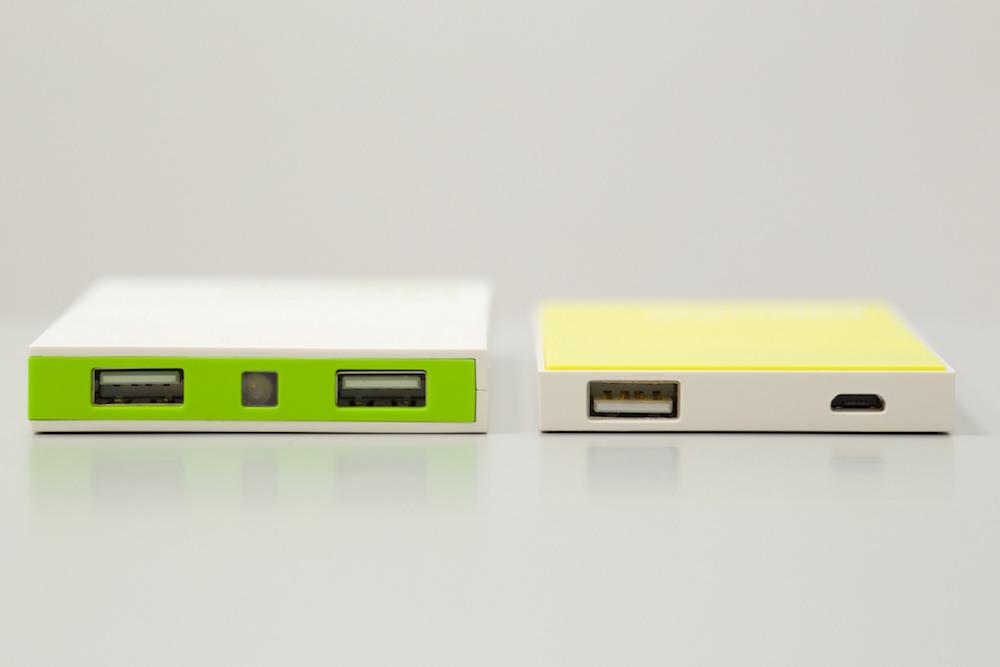Less than a decade ago when physical guidebooks were all the rage, many travellers had never even heard of power banks (portable battery chargers) let alone travelled with one.
That’s because power banks only sprung into existence fairly recently and didn’t become a widespread phenomenon until just a few years ago. There simply wasn’t a pressing need for their existence before.
But in today’s world, e-guidebooks have begun to replace physical guidebooks, and many travellers are carrying and consuming these digital travel guides on their smartphones and tablets.
It’s an approach that makes a lot of sense – e-books are weightless and no matter how many of them you load onto your device, it doesn’t become any heavier.
And the usefulness of devices like smartphones and tablets for travel goes far beyond their ability to carry and display digital guidebooks for easy consumption on the go.
Travellers also use their smartphones to:
- navigate around towns and cities, and locate hotels, transport hubs, restaurants, sights, attractions, ATMs, gas stations and other local amenities via various navigation apps
- keep track of their location on buses or trains so that they don’t miss their bus stop or train station
- avoid getting lost in mountains or while trekking in remote areas
- call emergency services in bad situations
- book hotels, trains, buses and tours
- order taxi cabs and ride-sharing taxis
- convert currencies to avoid getting ripped off when changing money
- translate foreign languages, both written and spoken
- document travels by capturing photos and videos
- create audio recordings of tour guide speeches at attractions
- check bank account balances
- record travel expenses
- communicate with friends and family
- share travel updates on social media
- authenticate account logins and purchases with two-factor authentication
- perform myriad other tasks
Furthermore, the growing acceptance of e-boarding passes at airports, presented via the screens of mobile devices, means that some of us rely more on our mobile devices than ever while flying.
And if you ever purchase e-tickets for buses or trains, your smartphone allows you to show the ticket inspector that you actually have a valid ticket for the journey!
To sum up, the modern-day traveller has become highly dependent on his smartphone to function properly on the road and he needs it to always work.
But there’s one major problem here, which is that most of the latest smartphones have pretty unspectacular battery life (even when you leave them untouched in airplane mode inside your pocket all day long).
Phones are getting slimmer, more powerful and more multi-talented, but all these advancements seem to be coming at the cost of battery life.
And smartphone batteries have a lamentable tendency to die at the very moment you need them most as a traveller, like when you first arrive in a new city at the end of a long train or bus journey, and have no clue where to find a hotel.
There’s even no guarantee that you’ll be able to keep your device charged at the airport or during a flight. Some airports don’t even provide charging stations and many airplanes don’t furnish any power outlets for passengers.
Power outages that last for several hours or even days at a stretch are also commonplace in many developing countries, even in some big cities, and when they strike, the clock is ticking before you end up with a flat battery.
And what about when you’re hiking or trekking in the wilderness or in remote areas where the villages have unreliable electricity or none at all? How can you ensure you don’t get lost without access to navigation apps on your phone?
You could always buy a paper map, but good ones can be expensive, difficult to find and if they get wet they’re useless.
Being able to keep your smartphone alive is a huge advantage when travelling in remote areas or off-grid, as even if you can’t access the Internet, you can still view downloaded maps, e-guidebooks and PDF files on your phone while offline.
Plus, if you ever have an emergency, at least you’ll be able to make an emergency call.
If Adrian Webb’s smartphone battery hadn’t died prematurely, he might not have tragically perished while attempting to climb Fansipan mountain in Vietnam, the highest peak in Indochina.
Okay, enough discussion of the problem. What’s the solution?
The solution is to carry a portable charging gadget known as a power bank.
All of the aforementioned scenarios are precisely where these nifty little gadgets come to a traveller’s rescue.
In this guide you’re going to learn everything you need to know about power banks and all the things you need to consider when deciding which model to purchase for your trip.
So what is a power bank exactly?

A power bank, also known as a portable charger or external battery pack, is a compact, portable apparatus that stores electrical energy and allows you to charge various devices on the go whenever you don’t have access to a standard power source like a wall outlet, car charger etc.
Power banks usually require several hours to charge to full capacity, but once they’re fully charged they’ll store that reserve of energy for whenever you need it to revitalize one of your dead devices.
Power banks in the form we know them today have only be around for less than a decade. The gadget was in development between 2001 to 2009, but didn’t make a first appearance until 2011, at the Las Vegas International Consumer Electronic Show.
Travelling with a decent power bank means the end of those dark days when your phone’s battery would die at the most inopportune moment imaginable. It also means peace of mind and never having to worry about your device dying ever again.
We consider our power bank an essential travel companion and never embark on a trip without it.
Factors to consider when buying a power bank for travel
Before we show you our list of recommended power banks, we want to first outline the most important factors you need to consider when trying to decide which power bank you should purchase for travel.
Knowing this information will allow you to make your own informed decision on what power bank to purchase without being swayed or influenced by anybody else with a hidden agenda.
Capacity

Capacity is perhaps the most important factor to consider when buying a power bank.
Power banks vary widely in their energy storage capacity, which will dictate the number of times that a power bank will be able to fully recharge a particular device until its reserves are exhausted.
Having a power bank with ample capacity is important when you’re travelling, as there will likely be occasions when you’ll be unable to access a working power outlet for a considerable period of time (such as during 40 + hour long train journeys in India where the power outlets on the train refuse to work).
In scenarios like these, a portable battery charger with inferior capacity won’t always cut it – it’s better to have the extra capacity and not need it, than need the extra capacity and not have it.
Power bank capacity is normally measured in milliampere hours, denoted as mAh, though this is a unit of measurement that can be quite misleading. (we discuss why below).
If you only intend to use the power bank to charge your smartphone, we generally recommend buying a power bank with a nominal capacity of 10,000 mAh, as this amount of juice will fully charge most smartphones 3 – 4 times (and most tablets 1- 1.5 times).
A good rule of thumb for travel is to buy a power bank with a stated capacity that’s 3-4 times that of your device’s battery. You will therefore need a power bank with a much greater capacity if you plan to use it to charge a tablet or other device with a larger battery.
Okay, so let’s say your smartphone battery is rated at 2,000 mAh and your power bank is rated at 10,000 mAh. In that case, you should expect it to fully charge your phone five times, right?
Wrong.
The reason for this is that there are various conversion losses and you normally need to knock-off around 25-30% of the nominal capacity to get an estimation of the real working capacity of the power bank.
So for a 10,000 mAh power bank, the real working capacity might be closer to 7,500 mAh and thus it will only charge your 2,000 mAh smartphone battery somewhere between three and four times.
Energy is lost inside the PCB (printed circuit board) of the power bank, in the charging cable and also inside the internal charging circuitry of your device.
These losses usually account for about 10% of the total losses, although
high-end power banks can have total conversion losses of less than 10%. Xiaomi power banks for example are known to be particularly efficient.
However be careful when a manufacturer states that the conversion rate is X %, as this number often only refers to the efficiency of the PCB and not the overall conversion rate taking into account all energy losses in the system.
But the biggest loss of capacity comes from the voltage conversion process that occurs inside the power bank. To explain this, we have to first understand what mAh actually means.
The mAh value is not actually measuring the energy storage capacity of the power bank.
What it means is that the power bank can supply a current of 10,000 milliamps for a period of one hour at the particular voltage that the power bank battery supplies.
But because power bank batteries supply 3.7 V and USB supplies 5V, a voltage conversion takes place inside the battery pack when you use it to charge your device.
At the new higher voltage (5V) the power bank can no longer supply 10,000 milliamps of current for one hour, so there’s a reduction in the mAh value of the battery pack.
Therefore if we want to determine how many times a power bank will charge our device, we are really only interested in knowing the mAh value of the power bank at 5V, not the nominal mAh value, which is only valid for 3.7V.
The correct and universal way to measure electrical storage capacity is not with mAh but with watt-hours or Wh, a unit which denotes how much electrical power a battery can supply for one hour.
To calculate the true energy storage capacity of a power bank, we must factor in not only the mAh value, but also the voltage that this can be supplied at.
The formula is:
Watt hours = mAh x Voltage/1000
For more info on how to calculate the real capacity of a power bank, see this page.
There are a few additional factors that can affect the capacity of your power bank.
A power bank that charges devices at faster rates can also incur higher conversion losses, although that’s a trade-off you’re probably willing to make for getting your device charged quicker.
Leaving your power bank in extremely cold or hot environments can also cause it to lose stored energy or can even permanently damage the battery.
Stored energy will also be lost over time if you neglect to use your power bank due to a phenomenon known as self-discharge.
So if you haven’t used your power bank for a few weeks or months, you should plug it back into the charger for a while, even if it was fully charged when you stopped using it.
Weight
Carry-on travellers in particular have to consider the weight of a power bank, since rather ungenerous weight limits apply to hand luggage that’s to be taken on board many airlines, and many chargers are not pocket-friendly.
A power bank may not weigh all that much on its own but it could still be the final straw that breaks the camel’s back.
A heavy brick in your pocket is also cumbersome; it forces you to tighten your belt or pants drawstrings to prevent your drawers from ending up around your ankles, and it annoyingly bounces around inside your pocket if you try to run.
Portable battery packs tend to get heavier as their capacity increases, with the 20,000 mAh + chargers starting to become, in our opinion, too unwieldy for travel.
We feel that the 10,000 mAh power banks strike the best balance between charging capacity and weight. A reasonable weight for a power bank of this capacity would be anywhere in the region of 150 – 250 grams.
If you’re a device power user or really need a high-capacity power bank for whatever reason, you may be able to justify carrying something heavier.
In general, the lighter the better but beware of power banks that are abnormally light, as this could be a warning that the inner components, such as the battery or safety mechanisms, are severely compromised.
Size
A more compact power bank easily slides into pockets, pouches and backpack compartments and leaves more space in these places for other important items.
A compact power bank can also fit more easily in your trouser pockets, making it easy to use your phone as normal on the go while it’s charging from the battery pack in your pocket (with the cable running between them).
The general rule here is that smaller is better, as long as the capacity is sufficient for your personal needs. And if you use devices in moderation when you travel, a high-capacity power-bank is not necessary for you.
Design

The power bank design that you decide to go with is influenced by personal preferences to a large extent, but design can also have important practical consequences and can impact the user-friendliness of the product.
Power banks vary in shape, though most are more or less rectangular with varying degrees of thickness. More seldomly you’ll come across power banks that are cylindrical, oval (in cross-section), cuboidal or even totally whacky shapes. We’ve even seen a power bank shaped like a red hot chili pepper.
A relatively sleek design makes it easy to slip a power bank into a tight pocket or backpack sleeve, though we find the somewhat thicker models still fit just fine in our roomy trouser pockets.
Rounded edges not only look elegant but also allow the power bank to be held comfortably in the hand, and you will often find yourself holding the power bank and phone together in your hand when the phone is charging and you need to use it.
Consider the location of the charging ports too. If the input and output ports are situated very close together, it could be difficult to plug cables into both of these ports at the same time.
This might make it difficult to avail of pass-through charging (charging your device from the power bank while the unit simultaneously charges from the mains), even if the power bank supports it.
Aesthetics probably matter more to most of us than we care to admit. Choose a colour and an overall look that you find aesthetically pleasing, so that you don’t regret your decision later. Also, examine the product all over; one face may sport a big logo or brand name that’s going to annoy you.
Glossy, polished surfaces are more vulnerable to scratches and showing up fingerprints than matte surfaces. Remember also that a power bank in a darker colour like black will do a better job at masking scratch marks, fingerprints and damage to the shell.
Build quality
A flimsy or fragile power bank made of cheap plastic or other inferior materials will do you no favours when you’re travelling.
Instead, you’ll want something robust that’s going to be able to withstand the unavoidable drops, knocks and impacts that accompany life on the road.
Superior power bank shells are constructed from materials like anodized aluminium, polycarbonate, silicone rubber and PC-ABS (polycarbonate acrylonitrile butadiene styrene).
Some of these materials have heat resistant or fire-resistant properties. Some power banks also have multi-layered shells for extra reinforcement.
The higher quality battery packs also have to pass rigorous vibration, shock and temperature tests before being shipped out.
If you hear mention of such materials and procedures when reading product descriptions and reviews, that’s all good news.
In general the most rugged and durable portable chargers are the ones designed for outdoor use, camping, trekking etc but these might come with extra features that you don’t need for everyday travel.
Brand
To be assured that you’re purchasing a quality product, it’s safer to stick with well-established brand names in the power bank market, such as Anker,RAVPower, Asus, Lenovo, Samsung and Xiaomi, and to buy from a reputable online or brick-and-mortar vendor.
Unbranded power banks or units made by obscure manufacturers are more likely to cause you problems. A substandard power bank will at best fail to charge your device properly, and at worst, damage it.
There is also the problem of knock-off power banks. That’s when you think you’re buying a battery pack made by a reputable manufacturer but it’s really just a fake imitation.
There are plenty of these counterfeit battery packs floating around in marketplaces like eBay, flea markets, street stalls, car boot sales and other such scenarios.
In India, suspiciously cheap, low-quality, knock-off power banks are often sold to unsuspecting buyers on trains. Chinese power bank manufacturer Xiaomi lost more than half its power bank sales in 2014 to counterfeiters.
But fake power banks aren’t something you need to worry about much unless you’re shopping in these sorts of shadier places.
But let’s say you are shopping in dodgy places for a power bank. How then would you distinguish a fake power bank at a glance from the genuine article?
Well, the answer is going to vary from model to model.
One of the common giveaways with fakes is that they’ll promise some outrageously high capacity like 50,000 mAh or 100,000 mAh at a ridiculously low price, or in an ultra-lightweight or compact unit. If a deal looks too good to be true, it probably is.
Another common giveaway is when the brand name is misspelled. Counterfeit power bank manufacturers often just can’t seem to figure out how to spell a well-known brand name.
Some power bank manufacturers are fighting back against counterfeits by making their bona fide products clearly identifiable with holograms or other distinguishing marks that can’t be easily copied.
See also this article on how to spot a fake power bank.
Number and type of ports

The number and type of ports a power bank has is another factor to consider.
Many power banks have a single output port, and with this kind of battery pack you will only be able to charge one device at a time. That’s fine of course if you only plan to use the power bank to charge one device.
Other power banks, especially the high-capacity models, can have dual output ports, three ports, four ports or more.
The advantage of having multiple ports is that you can charge two or more devices simultaneously, which is useful if you travel with multiple devices or you’re sharing a power bank between two or more travel buddies.
The majority of power banks we’ve seen use USB-A ports for output and these are compatible with Qualcomm Quick Charge technology in some models.
For input, most power banks have a micro-USB port. You’ll also find USB-C type input ports on some power banks.
Power output
The power output of a power bank dictates the rate at which it can charge your device.
Charging speed is obviously pretty important, as you surely don’t want to have to keep your device permanently hooked up to the power bank to be able to use it. It’s far more enjoyable to use your phone when there are no charging cables to contend with.
Portable chargers vary in their maximum electric current output, which is usually measured in Amperes (A).
The current industry standard for power banks is 2A, but some models have a max output of 2.4A and can charge your device even faster, as long as your device will accept that current.
If the power bank can supply more current than your device requires, that is not usually a problem, as your device will just draw as much current as it can handle.
On the other hand, if the power bank is unable to supply the current demanded by your device, it may not charge, or may only charge very slowly.
That is why power banks with high current output are always preferable to the ones with low current output. Avoid battery packs that only supply 1A or less, as these will take too long to charge your device.
There are also many power banks that support Qualcomm Quick Charge, a charging technology integrated with some Snapdragon-powered devices that takes charging speeds beyond the typical limits of USB and to new heights.
If both the power bank and your mobile device support QCC, you can enjoy significantly faster charging than is possible with a 2.4 A charger.
Qualcomm Quick Charge now has five standards (they keep releasing a new one every year) – 1.0, 2.0, 3.0, 4 and 4+, with all of these allowing for faster charging than standard USB chargers.
You can learn more about these standards and the differences between them in this article.
Power banks with multiple output ports, which usually happen to be the bigger high-capacity models, will usually have a total current output that is less than the sum of the individual port outputs.
For example if a power bank has 3 output ports, each port might supply 2.4 A when used on its own, but when all three ports are used at the same time, the total output is only 5.4 A, meaning that each port is now only putting out 1.8 A.
That said you can find power banks that maintain the full output of each port while charging multiple devices but you can expect to pay a premium for those.
Some battery packs with dual ports have a different output for each port, with the lower output port designed for charging smartphones and the higher output port designed for charging larger devices such as tablets.
Power input
Power banks obviously need to be charged in advance of when you expect you might need them. Generally you’ll charge them up overnight from a wall outlet to have them ready for the following day.
It always helps if a power bank recharges swiftly once it’s plugged into a power outlet, especially if you’re waking up in just a few hours.
How quickly a power bank can be recharged depends on its capacity and also the maximum current input it can accept.
High-capacity power banks tend to take longer to charge than the low-capacity chargers because of their sheer capacity, but many will also accept a higher current input, which speeds up the charging process.
The max current input of most portable chargers will generally fall somewhere between 1A and 2.4 A.
The higher the max input, the faster the unit can potentially recharge, but your wall charger and charging cable also need to support the max input.
Many AC wall adapters only support 1A, so look for one that can support 2A or 2.4A if your power bank will accept a higher input.
Most power banks will charge up fully in just a couple of hours, while others, especially the high-capacity models, could take the entire night.
